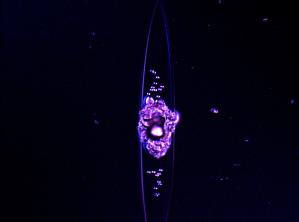John Bomphrey
beautiful imperfection
What got you interested in this area of science?
Since I was very young, I have been interested in how things work. I was forever dismantling things (radios, alarm clocks, telephones, computers) and re-assembling them, with varying degrees of success! From this, I developed a desire to understand how the components themselves functioned - this is how I first became interested in chemistry and physics and they are two subjects I still find fascinating today.
How is the work you are currently doing relevant to everyday life?
Semiconductors form a large part of modern life and it is hard to imagine where we would be without them. By introducing small changes, you can dramatically change their electronic properties. Through exploring different combinations and proportions of elements, it is possible to engineer new materials for specific applications in medical or communications equipment, for example.
What does your research hope to achieve?
The aim of the research is to investigate the growth of different semiconductor films and gain an understanding of how the growth may be engineered to provide samples with specific properties.
Briefly, what does the image show?
The image was taken of a gallium antimonide (GaSb) sample and shows a droplet of gallium metal (approximately 0.1mm across) on the surface of the film and the resulting ridge-like defect. Smaller droplets can be seen within the perimeter of the defect, some of which are smooth and shiny, while others are not. This suggests that some of the gallium metal has gone on to react with the antimony present.

